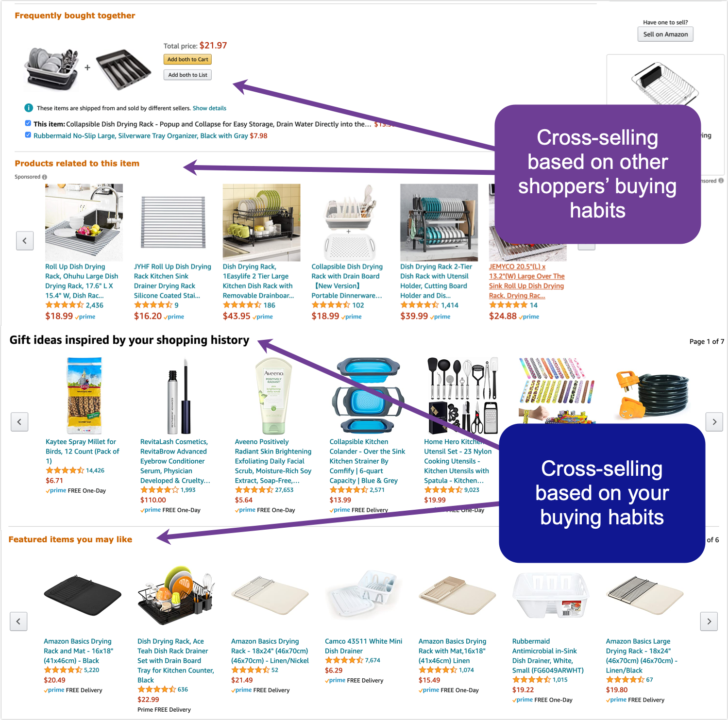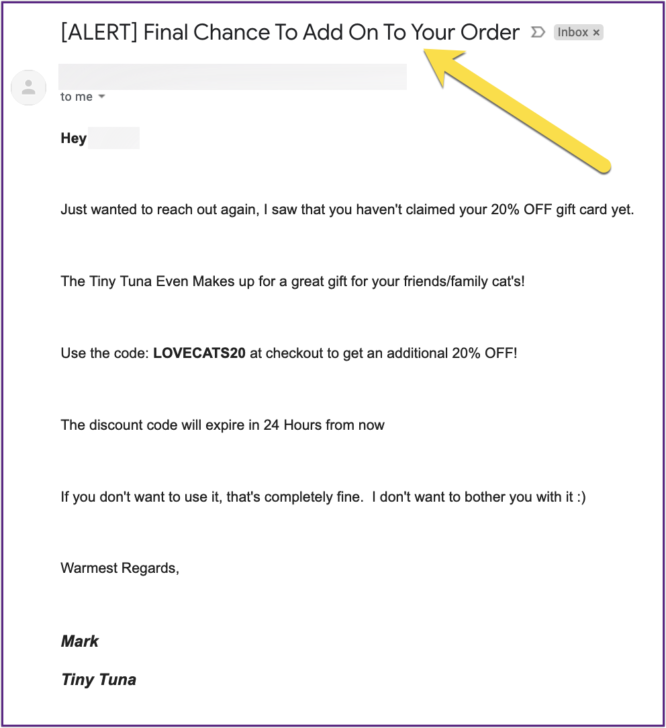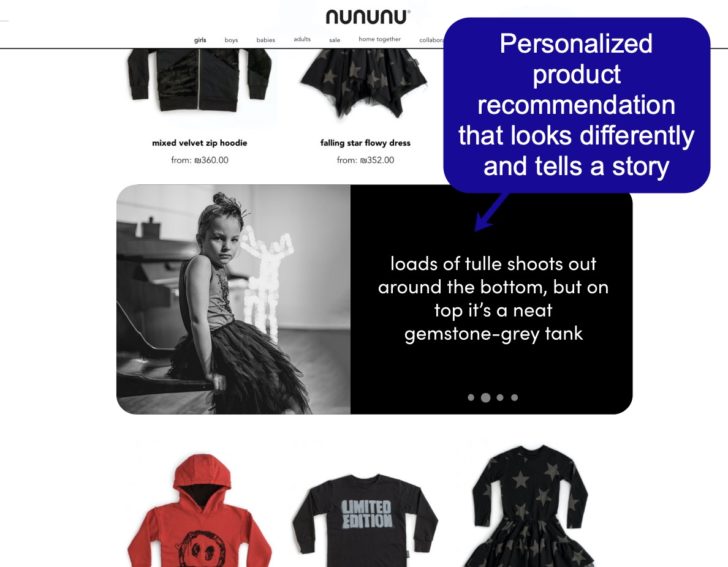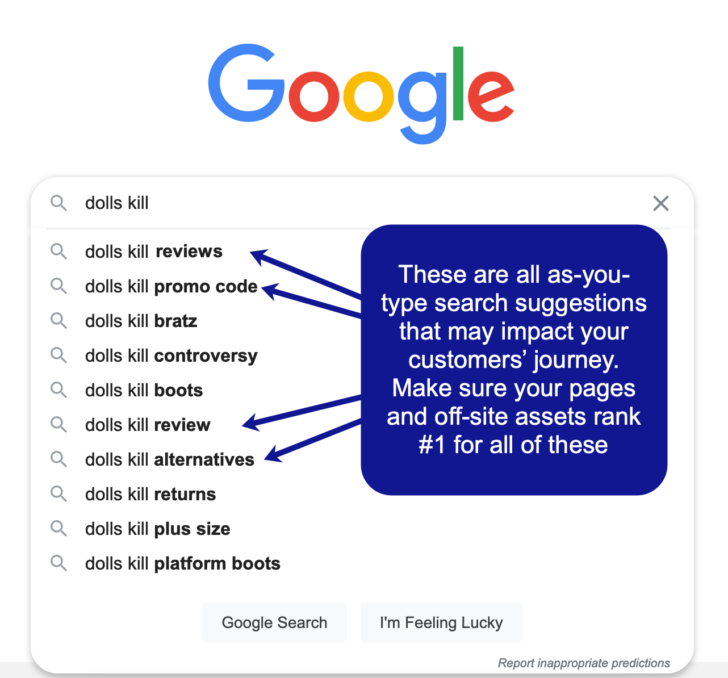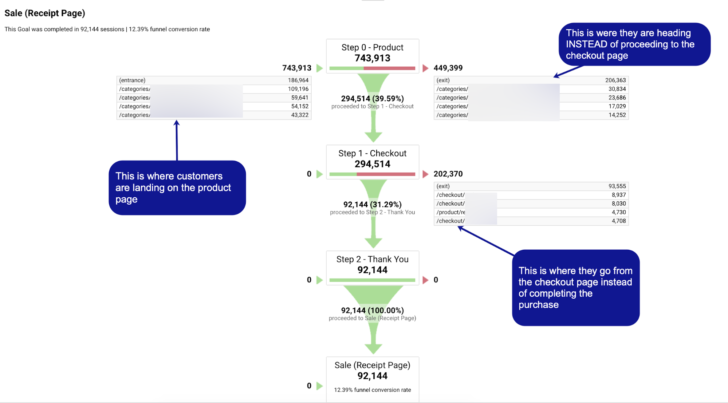The best strategies to innovate the e-Commerce sales funnel
Today, digital shopping is no longer an option, but an unavoidable necessity: according to the latest data, nearly 2.5 billion people worldwide buy goods or services online, and this number is set to grow. This global trend has opened up a world of opportunities for digital entrepreneurs, but it has also brought with it a number of challenges: first and foremost, attracting visitors and gaining visibility in an environment of fierce competition, but most importantly, making conversions and being able to turn these users into paying customers. This is where the art of setting up, managing and optimizing a sales funnel for ecommerce comes in, a strategic process that can help us convert a simple visitor into a loyal customer and that can be implemented through a few simple interventions.
The importance of the sales funnel for e-Commerce
As we know, sales funnel or conversion funnel is a model that describes the theoretical path a potential customer follows from first contact with the brand to final purchase. This path is often described as a funnel (hence the term “funnel”) because it represents the narrowing of the number of potential customers at each stage of the process.
Traditionally, an ecommerce sales funnel is divided into four main stages, summarized in the acronym AIDA (from the English initials for awareness, interest, desire, and action).
- Awareness. Potential customers become aware of the brand or product through advertising, social media, SEO or word of mouth.
- Interest. Once visitors are aware of the brand, they need to develop an interest in its products: here, quality content and detailed product information can make a difference.
- Desire. At this stage, visitors must be convinced that that product meets their needs or desires: customer reviews, testimonials, and product demonstrations can be effective tools for stimulating desire.
- Action. This is the final stage where visitors become customers, completing the purchase. A simple and intuitive checkout process, along with secure payment options, can facilitate conversion.
For some time now, then, an additional stage, Engagement, has been added, during which the customer engages with the brand and ideally becomes a supporter and promoter of it in turn.
Optimizing the sales funnel is critical to maximizing the return on investment (ROI) of an ecommerce. Trivially, there is no point in attracting a large number of visitors if we are then unable to convert them into customers, so we need to focus on improving each stage of the funnel to increase the chances of conversion.
Today’s challenges: users increase, processes change
Complicating the picture (and the work), however, are other relevant issues.
First, the traditional conception of the ecommerce conversion funnel, which proposed a linear process that began with brand discovery and, through the development of interest and the sparking of intent to buy, was completed with the execution of the action and any post-sale actions, is no longer realistic today.
But this is not always how real-world buying behaviors work, because each person follows a different path to purchase, as Google also explains with its theorization of the messy middle, which is precisely everything that happens “between the first trigger and the final purchase in the consumer buying process.”
And then there is context. We live in an increasingly connected world, where more than 5.16 billion people, or 64 percent of the world’s population, have access to the Internet and, nearly 60 percent of the time, shop online (to be precise, 57.6 percent of the world’s Internet users have made at least one online purchase in the past year).
The global e-Commerce market is growing steadily and by the end of the year is expected to exceed $6 trillion in sales, and then reach $8 trillion in 2026. Among the ecommerce giants, Alibaba holds the crown with over $780 billion in sales, followed by Amazon with $690 billion.
Digital shopping has also become the norm in Europe, with 60 percent of citizens regularly shopping online. The United Kingdom leads the ranking with $104 billion in sales, followed by Germany, France and Spain.
Italy still lags a bit behind, although digital commerce is showing signs of growth. 76 percent of Italians surf the Internet on a daily basis, and the average annual spending on online purchases is 1,608 euros per user. However, most of this spending goes to foreign purchases, with Amazon and eBay dominating the Italian market. As a result, although e-Commerce is growing, less than 15 percent of Italian businesses earn one euro out of every hundred from online sales, compared to the European average of 20 percent.
According to the Netcomm – School of Management eCommerce B2c Observatory of the Politecnico di Milano, in 2023 B2C ecommerce purchases by Italians will reach 54.2 billion euros, an increase of 13 percent compared to 2022. The service sector, particularly tourism and transportation, is experiencing a “second youth,” with online purchases worth 19.2 billion euros. Product ecommerce, on the other hand, will reach 35 billion euros, a more controlled growth than in previous years, but still significant.
A side effect of this growth in demand is, inevitably, an increase in supply even in areas considered niche: according to a recent survey by Markinblog, there are more than 26.5 million eCommerce sites worldwide, and more are being created every day.
Catch the customer at the right time
This data further underscores the importance and urgency of setting up, managing and optimizing an effective sales funnel for e-commerce: in an increasingly competitive marketplace, the ability to convert visitors into paying customers is critical to success.
After all, the goal is “simple”: to capture the attention of the right customer at the right time with the right product or service.
But behind this lies a thorough understanding of the audience and their buying behavior, as well as hard work to verify that indeed the site and brand are the solution to the need of the people we intend to win over.
How to optimize an e-Commerce sales funnel
Turning to practical aspects and operational tips, Capturly experts have identified five basic techniques that can serve to improve this flow and achieve desired goals. Specifically, these are working by leveraging the information obtained through heatmaps, curating the blog, investing on targeted ads, fortifying social proof, and setting up a loyalty program.
Here are the details.
- Heatmap
Understanding data is a crucial element for success: despite the wealth of quantitative information that tools like Google Analytics can offer, we must not forget the importance of qualitative insights, which allow us to understand how customers interact with our website, and this is where heatmaps become a valuable ally.
Indeed, heatmaps allow us to visualize users’ behavior on the site: they show us where they click, scroll and hover, giving us a detailed overview of their interactions, and by analyzing these maps we can identify areas of product pages that need action.
Our first step will be to carefully examine the heatmaps, looking for elements that may confuse visitors or call-to-actions that are not punchy enough, and then make the necessary changes and monitor the results. Heatmaps will help guide our design choices, allowing us to create intuitive, user-friendly product pages that drive conversions.
Another key aspect concerns images and product descriptions, finding out through heatmaps whether visitors interact with these elements or not. If we notice a lack of interaction, it may be time to revamp our images and descriptions, making them more engaging and informative to capture users’ attention.
Site navigation is a crucial element in an e-commerce user experience, and with heat maps we can check how our product pages work in practice: are visitors having difficulty finding the “Add to Cart” button? Is our search function easily accessible? We need to address any navigational issues to provide a smooth and seamless shopping experience.
Again, we must not forget about page load time: if heatmap analysis shows that users abandon our site quickly, it could be because of slow-loading pages, and this is the spur to optimize the speed of our website to keep customers engaged and reduce the bounce rate.
Finally, we need to monitor how users interact with promotional offers, and these tools can show us if visitors click on discount banners or special offers. If they do not, it may be time to revise our promotional strategy to make it more attractive.
- Blogging
Standing out from the crowd may seem like a tall order in ecommerce, but starting a blog where you publish useful, unique, informative and engaging content can be the leverage you need to outperform your competitors and expand your visitor base.
Blogging can also become a powerful tool for guiding people along the sales funnel, propelling potential customers from mere strangers to new buyers who have just made their first purchase on the site.
Not only can blog content drive traffic to the e-commerce store, it can also solidify the brand as an authority in the industry if it obviously resonates with the target audience. Topics for the blog and the types of content we can use include practical guides, industry news or product presentations, which can be developed the different formats: for example, creating guides that teach the audience how to use the products or how to navigate the niche, making lists of tips, tools or resources that the audience may find useful, offering real case studies (in which we share real examples of how customers have benefited from using our products) or comparing our products with those of competitors, highlighting the unique features and benefits of our items.
Finally, the blog can be a place to keep the audience up-to-date on the latest trends and developments in the business sector, providing current and relevant news.
- Targeting advertising
If managed correctly, targeted advertising can be a powerful driver for conversions in our e-commerce sales funnel, greatly increasing overall profits.
Although the expense of the investment can be high in terms of customer acquisition costs (CAC), being able to set up more accurate targeting, with personalized messages and well-optimized landing pages can significantly reduce CAC and provide important benefits.
The winning strategy involves, first, understanding who the ideal customer, the buyer persona, is; second, it is critical to create ads that resonate with potential buyers and stimulate higher conversion rates.
Generally, we can target our audience in three ways:
- Demographic-based targeting allows us to target people based on their demographics, interests, buying patterns, and generally anything that fits the profile of our ideal customer.
- Retargeting consists of re-targeting people who have visited our website and interacted with our products, proposing more personalized ads. This could be a shoppable ad with product recommendations based on their viewing history.
- Lookalike targeting is another type of targeting where we can upload a list of our loyal customers and the ad platform will find people who match the same criteria. With this type of audience, you can see higher conversion rates than with demographic-based targeting.
To maximize the effectiveness of targeted ads, we can follow these tips:
- Segment the audience. Dividing our audience into smaller segments based on factors such as demographics, browsing behavior or purchase history allows us to create tailored ad campaigns that target each group.
- Choose the right platforms. Identifying the platforms where our target audiences spend most of their time, such as social media, Google ads or email marketing, allows us to focus our advertising efforts on these channels and avoid unnecessary investments.
- Continuously test and optimize different ad formats, messaging and targeting options, analyzing campaign performance metrics for better results.
- Social proof
Humans are social creatures by nature, as Aristotle already recognized. As a result, social validation can influence our purchasing decisions in ways that might surprise us. Social proof is a powerful tool that can not only bring potential customers closer to products, but can also lead to repeat purchases and referrals via word of mouth.
By showing positive customer experiences, such as rave reviews, positive testimonials or mentions on social media, we can significantly improve the performance of our e-commerce sales funnel.
Here are some of the benefits of using social validation in our marketing efforts:
- Increased trust: positive customer experiences can help build trust with potential buyers, making them more likely to make a purchase.
- Higher conversion rates: social validation can help alleviate customer concerns and improve conversion rates on our e-commerce site.
- Increased brand reputation: showing positive feedback can strengthen our brand image and attract more customers.
Here are some ideas on how to use social validation on our website:
- Encourage customers to leave reviews on our website or on third-party platforms such as Google or Amazon. We can display these reviews prominently on our home page and product pages.
- Create a testimonial showcase: we can reach out to satisfied customers and ask for testimonials, to be featured on the website, social media or in email campaigns.
- Highlight social media mentions to reinforce credibility and show the popularity of our products.
- Show followers on social media: a high number of followers indicates that we are popular and loved by our audience and can also be a great form of social validation.
- The loyalty program
Loyalty programs can be a powerful tool for optimizing the sales funnel in e-commerce by rewarding repeat customers and incentivizing them to continue shopping with us. In fact, by offering incentives such as discounts, points or exclusive offers, we can increase customer loyalty and boost overall sales.
Here’s how we can use loyalty programs to optimize our sales funnel:
- Choose the right rewards: we need to offer valuable and attractive incentives to our customers, such as discounts, free shipping or exclusive products.
- Keep it simple: it is critical to design a loyalty program that is easy to understand and participate in. Customers are more likely to interact with a program that is simple and easy to use.
- Promote our program: we need to make sure our customers are aware of our loyalty program by promoting it on the website, social media, and in email campaigns.
- “Gamify” the experience: we can add gamification elements, such as progress bars or badges, to make the loyalty program more engaging and fun for customers.
- Monitor and optimize: we need to regularly analyze the performance of our loyalty program and make the necessary changes to keep it effective and relevant.
Techniques to innovate and optimize the sales funnel
But the fact that online shopping is becoming a norm also leads to a new awareness from users, who also have growing expectations and demands.
And so, with more and more small businesses going through digital transformation, there is an emerging demand for new ways to attract and engage customers. As Ann Smarty explains on Search Engine Watch, “one of the most effective ways to increase sales is to renew cross-selling tactics” and make some changes to the funnel, updating it in the light of new consumer needs and the emergence of new competitors.
To attract more people, it may then become necessary to include off-site activities, to manage situations where the customer interrupts the purchase process and techniques to bring it back to the site and cart; better understand and satisfy the customer journey, using semantic search of target search queries; continue to analyze the channeling of the site using Google Analytics.
More specifically, there are 5 ideas and techniques that can help create a more effective e-Commerce sales funnel.
- Renew your product suggestions
The first advice is to intervene on the system that suggests products related to the one displayed by the user.
To Smarty, cross-selling (which is precisely the technique of showing related products at all stages of the purchase process) “is one of the most important, but often overlooked components of the sales funnel” and represents “more than a third of Amazon’s revenue“.
Analyzing the public data of the online shopping giant, in fact, it turns out that “35% of what people buy comes from product advice based on algorithms driven by artificial intelligence”, and therefore it is not surprising to note that Amazon uses cross-selling throughout the site, from product pages to checkout, using different methods to match the customer’s best products.
How the cross-selling works
Cross-selling comes in many forms, including:
- Custom upsells: They are usually displayed on product pages to prompt the customer to purchase something they were not initially interested in. These tips can be guided by the customer’s previous purchasing habits or by the purchasing habits of other customers who have purchased the current product.
- roduct bump: shows the corresponding products directly on the checkout page.
- Upsell based on email: provide for the sending of automatic e- mails immediately after payment, which invite the customer to purchase other products to be added to the same shipment.
While it is a great way to increase the average value of orders, it is increasingly difficult to convince customers to fall in love with cross-selling and to innovate the strategy we can try to customize the advice on our products or try new and more attractive formats (such as testimonial experiences, testimonials, Instagram carousels, stories). There are also specific e-commerce tools that implement these solutions, showing product recommendations based on individual browsing data and turning them into captivating stories.
- Making the customer care a part of the funnel
The ideal customer journey should follow this path: the customer lands on a product page, adds it to a shopping cart, sends the payment details and waits for the product to arrive.
Of course, this is not always the case: customer journeys are often interrupted and, in many cases, they are interrupted by customers themselves, who distract or block themselves with questions they need answers to before completing their purchase.
The truth is that “no matter how well you set your knowledge base, many people will still want to contact your customer support team before you buy”, and it is precisely this point that can stop many shopping journeys if we do not set things correctly.
Setting up follow-up emails to keep in contact
It is essential to record every kind of interaction with customers and follow them up with a personalised follow-up based on the customer’s action – that is, whether you have completed the purchase or not.
Depending on the CMS platform in use, we may already have access to email automation that allows you to launch custom follow-ups.
Customizing the emails of the customer care team
The screenshot above lacks a central element: the customization of follow-up emails, since branding these communications can serve to “gradually increase the chance of the brand of being recognized and, finally, generate more repeated sales.
The author highlights another factor to remember: emails are used to bring back the customer on our site. That is, they must restart the interrupted purchase path, so the links to the site are essential: as a minimum, you must then add a clickable logo and a detailed email signature that pushes the customer to take an action.
- Taking care of brand-driven search queries
Cos’è che tende a interrompere il viaggio dei nostri acquirenti? Se il problema non è relativo all’assistenza clienti, di solito può dipendere da:
- Check of product reviews.
- Search for promotional codes or special offers.
To better understand the paths of our customers outside of our site, Smarty recommends that you search for branded keyword (those keywords that contain our name or product), using as the first tool Google Suggest (search engine autocomplete suggestions).
The search suggestions that appear during typing can influence the path of customers, and it is important to check that our pages and resources outside the site are in first place for all these occurrences.
According to the author, we need to start displaying all these queries as part of our sales funnel, possibly also thinking about the opportunity to create one (or more) landing page to convince people to continue their journey on our site and avoid relying on third-party sites for this (“not the wisest decision”).
Such queries are often used in the medium of channeling – just before your customer completes the purchase – and therefore this should also be reflected in the copy.
- Creating a copy based on the search intent
Regardless of whether our landing page (the product) is based on organic traffic or not, it is a good idea to use search intent to orient copy creation. The analysis of the search intent “based on semantic analysis is the only method we have to predict the expectations of customers before we can examine the actual behavior of the user on the site“, says Smarty, and “will help us to better understand the user journey”.
In particular, we can find out what they are looking for and where their research can lead them; identify the products they might be interested in; find ideas to better catch their attention: all these aspects can be satisfied with semantic research, to run with a special tool (like our tools!) that allows us to know the “underlying concepts” of a target query search to create a text more in focus.
These optimized pages may also be able to climb the search rankings, but regardless of this they will certainly be closer to the needs of customers, to which they will provide all the useful and necessary information related to the product – without forgetting Google’s advice to improve information on e-commerce products.
- Analyzing the sales funnel
Monitoring our sales funnel is a must, of course, although conversion tracking is not usually included in SEO metrics. However, tools like Google Analytics can provide a comprehensive analysis of conversions, which also includes displaying the sales funnel.
After setting up conversion tracking in Google Analytics we need to analyze the funnel by proceeding with Conversions -> Goals -> Funnel Visualizations, and so we can find out “where customers are heading instead of completing their buying journeys”.
The goal always is client satisfaction
There is one aspect that we must never forget in this work, namely that the basis of the optimization of an e-commerce is to provide a good user experience to customers, who are encouraged to come back buying again.
Even when we work on the sales funnel, then, we can not overlook the main fundamentals such as checking customer feedbacks, monitoring brand mentions and always strive to optimize the positive experience of customers.
In the current scenario, where innovation is increasingly an integral part of digital marketing and the daily context has drastically changed purchase behaviors and increased the demand for digital transformation and innovation, It is important not to lose sight of the funnel of the sales, our reference to try and generate profits. And the five previous steps can help us make our channeling more effective and help increase e-Commerce sales.




